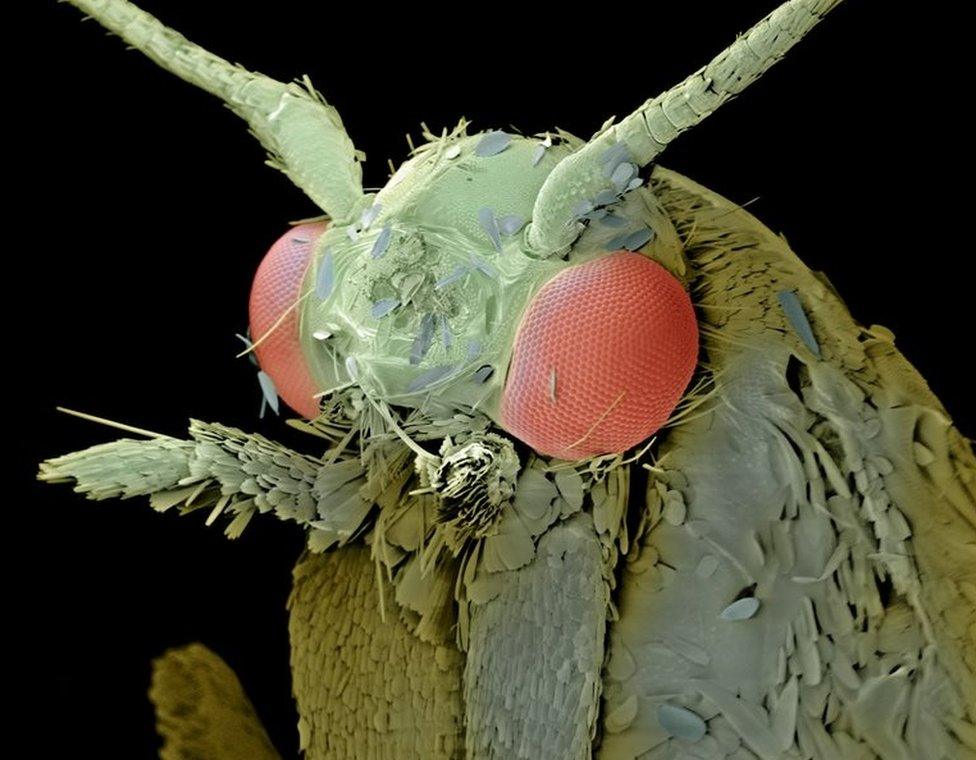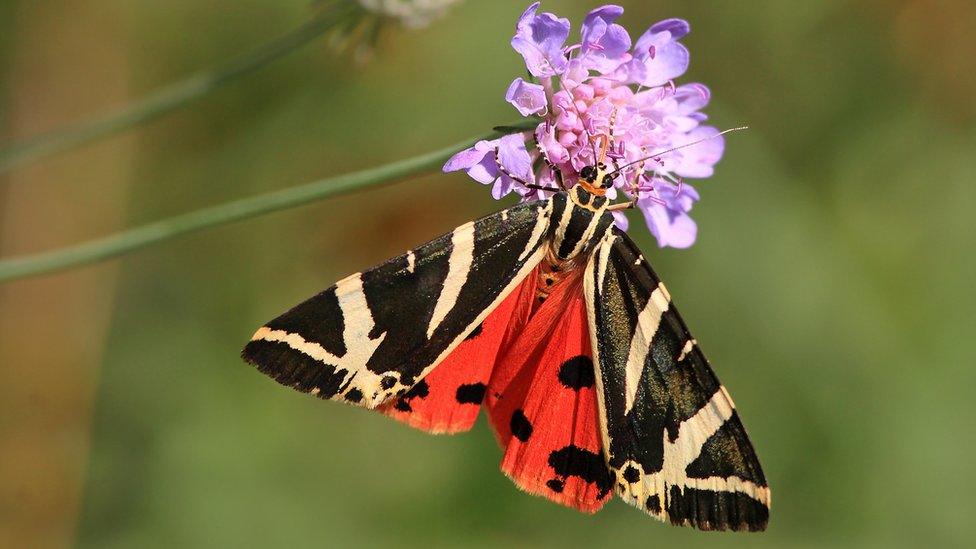Reality Check: Are clothes moths on the rise?
- Published

It's been reported that the number of clothes-eating moths is surging. But are there figures to back this up?
You'll know if they're in your home. Hundreds of little creamy-white insects cluster in living rooms, bedrooms, kitchens, cupboards, bathrooms.
Bald patches form in carpets, while holes appear in jumpers, curtains, scarves and dresses.
According to recent reports, the number of fabric-destroying moths - whose larvae (tiny caterpillars) feed on protein in animal-based fabrics such as wool, fur, velvet and silk before they become winged insects - is on the increase.
But is this based on anecdote alone, or are there some actual findings to back it up?
The pest-control firm Rentokil recently reported that calls relating to clothes-moth infestations had risen by a third in a year., external The Sun newspaper said a mild spring had brought on a "critter-breeding frenzy", likely to bring on more insects this summer.
Last year, English Heritage, custodian of many a tapestry and tabard, claimed numbers of the common clothes moth caught in its properties had doubled in five years.
The organisation launched a further study, providing people in 42 counties of England with a total of 5,000 indoor traps. The results were published in April this year, showing these average regional concentrations of moths per trap:
London and South East - 23
South West - 17
West Midlands - 16
East of England - 12
North East - six
North West - five
East Midlands - three
So, where you lived in England (the study didn't stretch to the rest of the UK) influenced the likelihood of moths being a problem.
Pre-1950-built houses were the properties most susceptible to infestation, explained by their having more voids, fireplaces and attics than modern homes.

But what evidence is there of an increase in numbers?
The charity Butterfly Conservation (BC) has been carrying out surveys of the British moth population since the late 1960s, using outdoor traps. But it hasn't done the same indoors, which is where common clothes moths - the ones that do most damage to materials - are usually found.
But BC's Philip Sterling, who has studied moths since the 1970s, believes the anecdotal evidence for population increases among clothes-eating species is overwhelming.
"When I first started, I would hardly ever come across clothes-eating moths in houses," he says. "The common moth wasn't that common at all. But in the last 20 to 30 years in particular it's become far more common."

How to deal with a moth infestation
Deep clean all your wardrobes and chests of drawers
Shake out wool clothes and other animal-fibre garments outdoors every few weeks to help dislodge larvae
Wash clothes containing animal fibres on the highest possible temperature (always read labels first)
For more delicate fabrics, such as silk, place items in plastic bags and leave in the freezer for 12 hours or more
Use mothballs, although the scent is unpleasant to humans too and hard to remove
Use traps

Dr Sterling says case-bearing clothes moths - so-called because their larvae carry a silken case around with them - are seen more often too.
A return to the use of natural fabrics, especially wool, which attracts the feeding larvae of common moths, is partly responsible, he argues. Foreign travel has meant more carpets, pashminas and so on coming into the UK, bringing moths, he adds.
During the 1970s, by contrast, the fashion for nylon shirts and polyester dresses meant more clothes were inedible.
But today's infestations would have seemed paltry to our more distant ancestors. "Certainly there would have been far more moths in Victorian times or a bit before, when there would be more natural materials in use," says Dr Sterling.
"They probably didn't mention them as much back then, because they were more worried about ticks and lice and other creatures.
"But the basic pattern seems to be that, in the 20th Century, clothes-eating moth populations went down a lot and they have come back a bit in recent years. I expect they'll continue to do so for a while too."

The Jersey tiger moth is a treat for moth-watchers
The brown house moth, once the most common clothes-eating moth, would have been very familiar to Victorians. It prefers cool, damp conditions and is no longer found so often in centrally heated homes.
But the environment is better for the heat-loving common clothes moth, which Dr Sterling says probably originates in Africa.
Common clothes moths and case-bearing clothes moths don't travel very far on their own in the UK, as they can't usually survive outdoors in its cool climate for long. So infestations tend to be localised, larvae and grown moths being transported via people's clothing, from one home to another nearby.
Also, it must be noted that only about seven of the UK's 2,500 species of moths are known to damage fabrics.
And the news for moths, in general, is not good. Butterfly Conservation found that two-thirds of the 337 species it tracked outdoors had declined in numbers.
Dr Sterling says the areas where clothes-eating moths appear most prevalent - the southern parts of England - are in fact those where populations of outdoor moths have declined most.
Agricultural changes, including greater use of pesticides and fertilisers, have left less habitat like hedgerows in which they can thrive.
"Most moths are no bother to anyone and many are beautiful," says Dr Sterling. "It's just that the ones we come into contact with most often cause us the most problems."

